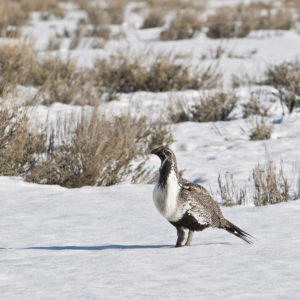Earlier this month, nine bills were introduced by the Congressional Western Caucus to make significant changes to the Endangered Species Act. While these bills make revisions to a number of pieces of the ESA, one common thread across them is an effort to increase the involvement of local governments, private organizations and individuals.
The traditional approach employed under the ESA has led to conflict between different interest groups. Encouraging cooperation across society could go a long way in reducing this conflict. By increasing engagement with state and local actors, we are also likely to get more successful conservation efforts that leverage local knowledge surrounding species and habitats.
One of the biggest challenges in effectively conserving endangered species is gathering good data. With more than 1,400 animals and 900 plant species listed as either endangered or threatened under the Endangered Species Act, the federal government is responsible for keeping updated information on a huge amount of wildlife and fauna. Of the 85 species on the U.S. Fish and Wildlife Services website that have been delisted, more than one-fifth have been delisted because the initial decision was made with incorrect data.
One proposed reform would require the federal government to include data from states, tribes and local governments to fulfill the ESA’s requirement that agencies use the “best available scientific and commercial data” in listing decisions. Because local actors often have the most accurate information about species in their area, increased data sharing will likely benefit species and help ensure that resources are spent on species that most need protection.
Cooperating in data sharing is helpful, but another promising reform would allow the Department of the Interior to create cooperative management agreements with states, local governments, tribes and individuals. In cases where successful species conservation programs are already being implemented at the state or local level, the bill allows those programs to “take the lead” on ESA conservation efforts in coordination with federal officials. This proposal would take advantage of existing cooperative conservation plans like those implemented throughout 11 western states to protect the greater sage grouse.
This would allow states like Wyoming, a pioneer in sage-grouse conservation efforts, to continue to seek innovative solutions such as the state-led coalition of local and state officials, conservation interests, and energy companies that have successfully worked to stabilize the state’s greater sage grouse population. Other states have followed Wyoming’s lead and created their own sage grouse conservation plans.
These state-led efforts were successful enough that the Fish and Wildlife Service stated it was unnecessary to list the species as endangered. Allowing states to continue to take the lead in these efforts encourages states to seek local solutions that leverage their understanding of the species, habitats and those best suited to assist in these efforts
A third proposal would further engage local conservationists by allowing conservation efforts that occur outside designated critical habitat areas to be considered in decision-making about species. Critical habitat areas are deemed essential for species recovery but often only cover a part of the territory on which the species lives.
Recognizing the efforts of state and local conservationists as valid contributions toward species recovery would help further encourage local conservation. In addition to efforts to help the greater sage grouse, states and local groups are taking action to help preserve other species through plans like the Lesser Prairie-Chicken Initiative. This partnership of public and private organizations helps ranchers and farmers improve their agricultural practices while improving habitat for the lesser prairie-chicken. When these efforts benefit species, they should be considered in species management decisions, even if they do not occur on federally designated habitat.
The current ESA framework for facilitating cooperation between important conservation actors should be updated to give species the best chance at thriving. Private landowners, state governments and local groups are already working across the country to help endangered species recover and thrive. Reform efforts that take advantage of these local efforts and include local knowledge in the process have the best chance at helping effectively conserve endangered species.

